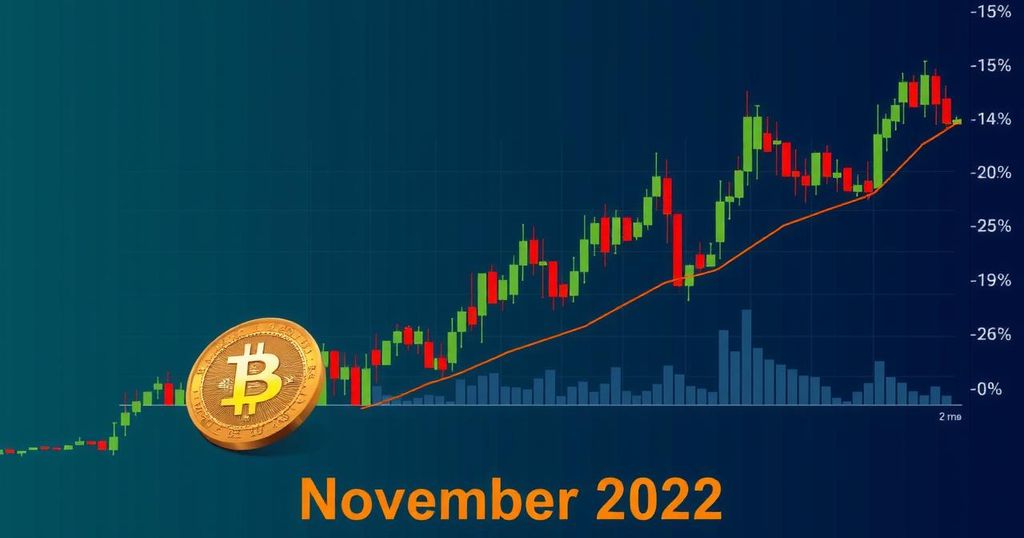Negative Forecasts for Bitcoin Prices: The Impact of Mining and ETFs
**Negative Forecasts for Bitcoin Prices: The Impact of Mining and ETFs**
Currently, the outlook for Bitcoin pricing is largely grim, predominantly due to mounting concerns surrounding mining activities. It is crucial to differentiate between short-term predictions and those that span a medium to long-term horizon.
**Recent Market Developments**
The value of Bitcoin experienced a decline of 4% yesterday, reflective of a 4.7% drop over the past week and a 7% decrease over the month. The recent trading session commenced on a negative note following the reopening of US stock markets, which also recorded substantial losses. For instance, the S&P 500 index plummeted by 2% in one trading day. This downtrend affected Bitcoin’s value, which had been positioned above $59,000 prior to the market reopening but fell to approximately $57,500 by the end of the trading day. The downward trajectory persisted, culminating in a notably sharp decrease to $55,500 just before the commencement of trading on Chinese stock markets.
On the following day, the Tokyo stock exchange experienced a 4% loss, likely contributing to continued pressure on Bitcoin prices. Although the drop in Bitcoin value may appear significant, it should be contextualized. The price fluctuated below the support level of $57,000, reaching the support at $55,000; however, this is not unprecedented compared to the substantial decline from $70,000 to under $50,000 that occurred from late July to early August.
**Short-Term Forecasts**
In the immediate term, projections are decidedly unfavorable. With the failure of the $57,000 support level, there is a potential for Bitcoin to revert to $55,000, or even revisit the sub-$50,000 range observed in early August. While the price briefly regained a position above $56,000, it lacks adequate stabilization to inspire confidence. A significant concern arises from miners’ activities—expectations were that the April halving event would reduce their selling pressure, yet miners are currently offloading more BTC than anticipated. This is largely attributed to their need to liquidate accumulated reserves to remain solvent.
Moreover, despite the halving’s impact on revenue, operating costs have remained elevated due to persistent difficulty levels and hashrates. Consequently, some miners face existential challenges, and industry-wide capitulations may ultimately lead to a more sustainable mining environment.
**Medium-Term Adjustments**
In contrast, a broader perspective reveals potential positive shifts. As miners exhaust their BTC reserves, a natural reduction in hashrate may occur, subsequently enhancing mining profitability and diminishing selling pressure. Furthermore, historical trends have indicated that October can yield favorable outcomes for Bitcoin, potentially influenced by market sentiments regarding upcoming American elections, which often precede upward cycles.
Additionally, upcoming rate cuts from the Federal Reserve may inject liquidity into the markets, potentially boosting Bitcoin’s appeal.
**ETF Market Influence**
Another pivotal element affecting Bitcoin prices is the recent performance of spot Bitcoin ETFs. Since January, these ETFs have indirectly integrated Bitcoin into American stock exchanges. Upon the reopening of the markets, Bitcoin ETFs saw a significant outflow of approximately $290 million, compounded by a prior outflow of $175 million. This compelled ETF managers to sell Bitcoin, exacerbating the selling pressure on the asset. However, it is essential to note that ETFs, by design, are subject to short-term fluctuations; for example, the previous Monday saw an influx of $200 million into these financial products.
**Conclusion**
While the short-term forecasts for Bitcoin remain uncertain and somewhat pessimistic, the medium-term outlook may offer encouragement. As the market stabilizes and miners adjust to new economic realities, market conditions may revert toward a more favorable climate, with historical precedents suggesting potential improvements following natural market cyclical patterns. Vigilance and responsiveness to market changes will be paramount in navigating this fluctuating landscape.
**Sources:**
– Market Analysis Data from BitInfoCharts
– Historical Performance Trends from Financial Industry Reports
– Economic Indicators from Federal Reserve Announcements








Post Comment